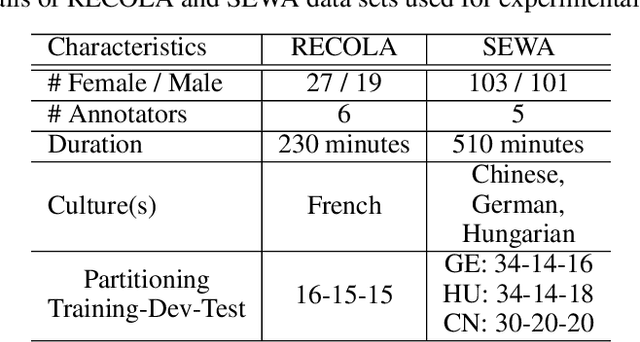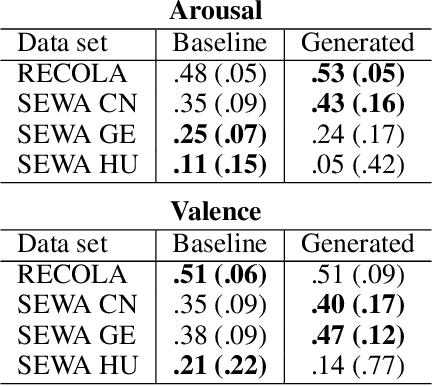Dynamic Time-Alignment of Dimensional Annotations of Emotion using Recurrent Neural Networks
Paper and Code
Sep 21, 2022



Most automatic emotion recognition systems exploit time-continuous annotations of emotion to provide fine-grained descriptions of spontaneous expressions as observed in real-life interactions. As emotion is rather subjective, its annotation is usually performed by several annotators who provide a trace for a given dimension, i.e. a time-continuous series describing a dimension such as arousal or valence. However, annotations of the same expression are rarely consistent between annotators, either in time or in value, which adds bias and delay in the trace that is used to learn predictive models of emotion. We therefore propose a method that can dynamically compensate inconsistencies across annotations and synchronise the traces with the corresponding acoustic features using Recurrent Neural Networks. Experimental evaluations were carried on several emotion data sets that include Chinese, French, German, and Hungarian participants who interacted remotely in either noise-free conditions or in-the-wild. The results show that our method can significantly increase inter-annotator agreement, as well as correlation between traces and audio features, for both arousal and valence. In addition, improvements are obtained in the automatic prediction of these dimensions using simple light-weight models, especially for valence in noise-free conditions, and arousal for recordings captured in-the-wild.
 Add to Chrome
Add to Chrome Add to Firefox
Add to Firefox Add to Edge
Add to Edge